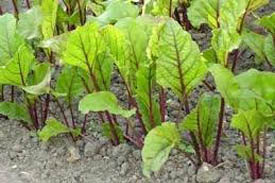Gardening: Asparagus
When Diane leads me down the vegetable isles of the supermarket to point out the rising cost of foods, I casually lean over the asparagus section and have a tremor when I see the price. Fresh green asparagus beats canned asparagus all hollow, but as the season rolls on, you might can a few quarts. I love asparagus.
My old asparagus bed was planted some twenty years back and has, as expected, died back from old age. But of course I left it rough, unweeded, unfertilized, and uncared for. Yet this bed of health kept on producing. More than we could eat. I did learn a lot about that 4’X 30’ bed, and of course I am now going to pass onto you my pearls.
Asparagus is a prime springtime health plant that helps greatly in unclogging and cleaning out the winter’s urinary tract from eating too much proteins and sitting around doing nothing. The urinary tract is very important for your temple of health. You will in later years be more aware of this fact since it involves your kidneys which filter your blood supply, your bladder and tract that needs unclogging from particulates, and of course in men-the prostrate which we covered last year.
Specifically “asparagus officinalis” is a fern like perennial herb growing 4’ to 10’ high, 6’ horizontally under the soil crust and as much as 6’ to 8’ deep. 8 green stalks contain 1100 units of vitamin A; .360 mg vitamin B1; .065 mg of vitamin B2; 20 mg of vitamin C; 21 mg of calcium; 40mg; of phosphorus; 1 mg of iron; 2 grams of protein; and 20 calories. This sounds very healthy.
A twenty year plant production implies you must find a area that is not going to be disturbed, such as the side of a garden with sunshine, good soil (which we will improve before planting), maybe some water runoff from a roof and the acceptance that asparagus each year will grow very high. The black and yellow garden spiders love this environment and must be protected, or removed, and relocated before they make their egg sack; being good mothers the garden orb weaver spider-quite harmless to us- is a necessary predator to undesirable insects.
We will talk about spiders next fall.
In my current garden makeover I will probably use the same place, same bed area as the former bed as re-seeding beds seem to last for 50-60 years, or more, usually the writer-gardener dieing off before the beds do. It is a nice sunny area, with good drainage and access to the chicken house roof water collection this time around. The soil requirements are a pH of 6.5 to 7.0 and I would think with almost 3mg of calcium per Mary Washington Stalk (and we are going to grow better plants this cycle) a pH of 7.0 is better. So we are going to add dolomite limestone from the garden center in accord with the rule of raising pH 1 point at 50 lbs. per 1000 sq, feet. So if you were planting a bed 4’X 50’ (to make math easier for me) you would have 200 square feet. Cut this in half and you have 25 lbs. per 500 square feet, cut again and you have 12.5 lbs at 250 square feet. Use your pH meter to start with.
Let us assume you wanted to raise the pH 1 point, you could sprinkle 12 lbs of dolomite limestone on this bed space. Now till it in. Mix it well.
Additional amendment of course is mixing compost and that figures if you’re tilling at 6” deep, times 200 square feet that implies a soil column of 100 cubic feet, and you would want to cover the soil top to a depth (ideally) of six inches. We prefer to mix compost, manure and additionals of leaves etc to the same volume of garden soil. Figure 50/50 ratio.
Another poor mans method if you have a good soil bed is to make a furrow, that’s a small trench, say a foot deep and fill with composts, manures etc.
Of course the most dedicated gardeners will dig a big wide trench 2’ deep and fill it with composts etc. That is beyond me, but people use to do it and of course the results were spectacular. Remember how big the root ball underneath the soil is. Now, if I had a tractor with a backhoe…Think of the U-PICK business I could get into…Diane, did you see this new tractor at John Deere? It is …just what WE need…
While you are tilling the garden bed up, add about 1 lb. of bone meal per 100 square feet, a pound of sea kelp powder also. If you raise chickens, or not, you might add a few pounds of chicken granite-fine baby chick- to the till. Now you are ready to order your Jersey Knight Super Male Asparagus two-year-old starts.
Asparagus grows male and female plants. The females come up pencil thin and hard as a rock. The males are juicy and sweet big and bold, as males are suppose to be. If you plant a Mary Washington variety you will get half females- so just take more time and pull them out.
Actually you have to be careful in reading the advertisements. For example I always believe that dark color plants resists bugs better than juicy greens. So I read an ad that said: male Purple Asparagus…I tried it and half was female. The advertising was a bit misleading for old eyes and wishes. The Jersey Knight Super Male series- read carefully is best.
Now I will lay in a furrow down the center about a foot deep and lay in the slotted plastic drain pipe with sock covering to catch the water run off from the chicken house. Note that the massive root size gathers rain in the winter and swells and dispenses the succulent asparagus spears in the spring. BUT if you follow my thinking that there is a dry spell coming, you might as well add water as much as you can.
So on either side of the pipe you can plant the starts in a jig saw fashion. It does not really matter, as the starts will spread quickly. Space them about 18” apart. It is a good idea to presoak them first for a couplet of hours, and at least make sure that the plantings hole is damp.
The starts look like spiders with their roots spreading outwards like legs. There is a small but noticeable knob at the top. This knob is the upside. Make a shallow hole for the starts. Bring the center up as in a volcano. Place the start over the volcano and spread the roots outward in a circle. When covering the start, to a depth of a few inches (some garden readers recommend two feet deep), make sure the knob is up. It does not have to be visible. So there is no confusion about old writings and new writings, seeds drop and sprout and grow and roots form. Save the labor.
Make a depression around the start. You will have to add water this summer, or in dry spells for the first year- maybe two years.
If you go with two-year-old plants you can make your first sample cutting of a TINY amount of spears that reach 4 to 6 inches high in the second year of planting. Some ferns must grow that first year, as in the fall during the die back, all the plant energy runs down to the roots. I prefer to cut my spears at the soil level but not higher or else the spear continues growth but alas, there is no quality. Some people break the spear off, some use an asparagus forked knife. I use a pocketknife.
There after you will have more than you can eat, so do not give it away, can it.
After the spring eruption for a period of a few weeks the spears will shoot up more skinny. This is a time to STOP cutting as the root is getting stressed and needs to grow ferns.
When the fall comes, and the ferns are dry and dead, cut them down and lay them on top of the bed. This will protect the roots from extreme freezing. You can take some of the ferns, mix them with tomato plants and make compost that is ideal for either tomatoes, or asparagus, as they are companion plants.
If at the beginning of the year you set out some determinate (fixed harvest season) tomatoes such as Roma canning tomatoes, they will grow better. This saves space and gives you an idea about how effective companion planting is.
To reduce weeds and grasses, in the second year, clean the beds, lightly dust with dolomite limestone and sprinkle-sow- bacteria coated White Dutch Clover over the bed. This makes more nitrogen for the asparagus and crowds out weeds. Note that the clover seed must be coated with the proper clover bacteria starter or they probably will not grow unless the soil has been previously inoculated. You can get clover seed- inoculants and maybe pre coated seed at farm stores and especially Southern States Feed Stores. Of course you can also just place loose straw over the bed, retaining moisture, suppressing weeds, and the spears shoot up through it. Beats hoeing and sweating all year.
Pests are the 12-spotted beetle and the Asparagus beetle. These I have not seen, but I do see Japanese beetles. Everything kept growing but by running my chickens in the beds they cleaned it up from bugs. I might add for the open gardener adult chickens can destroy your garden. They really can dig holes. So only pre pullet six-week-old chickens can run therein. If you follow along with my new garden makeover-the beds being fenced, or enclosed in Growhauses, you can run chickens in the yard area. More later when we talk about chickens.
I have been at this for years and I am still not caught up. So take my advice, do a little each year and do not expect to get it all done the first season.
Old Timer
Copyright: 2009, Back2theLand.com, Mark Steel



